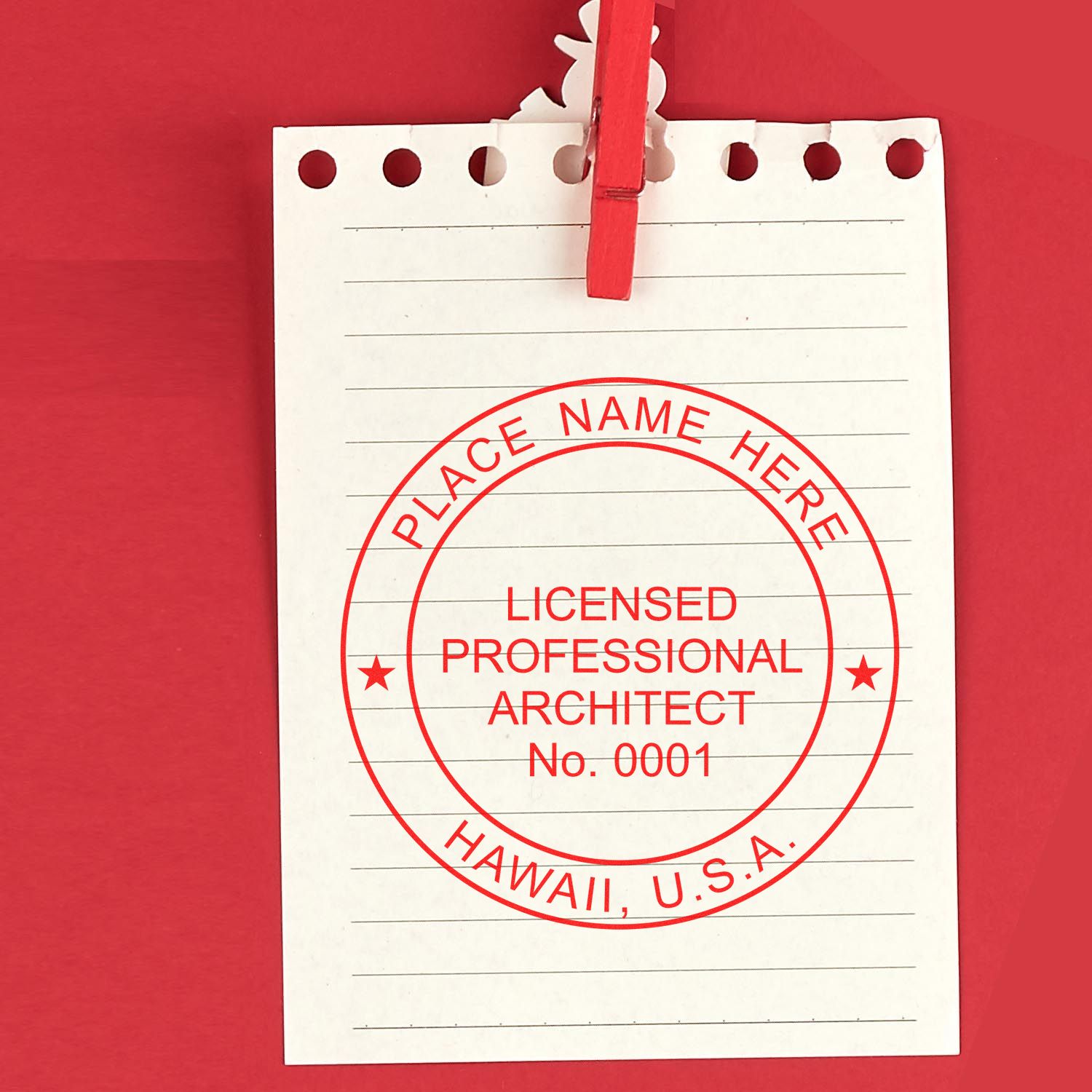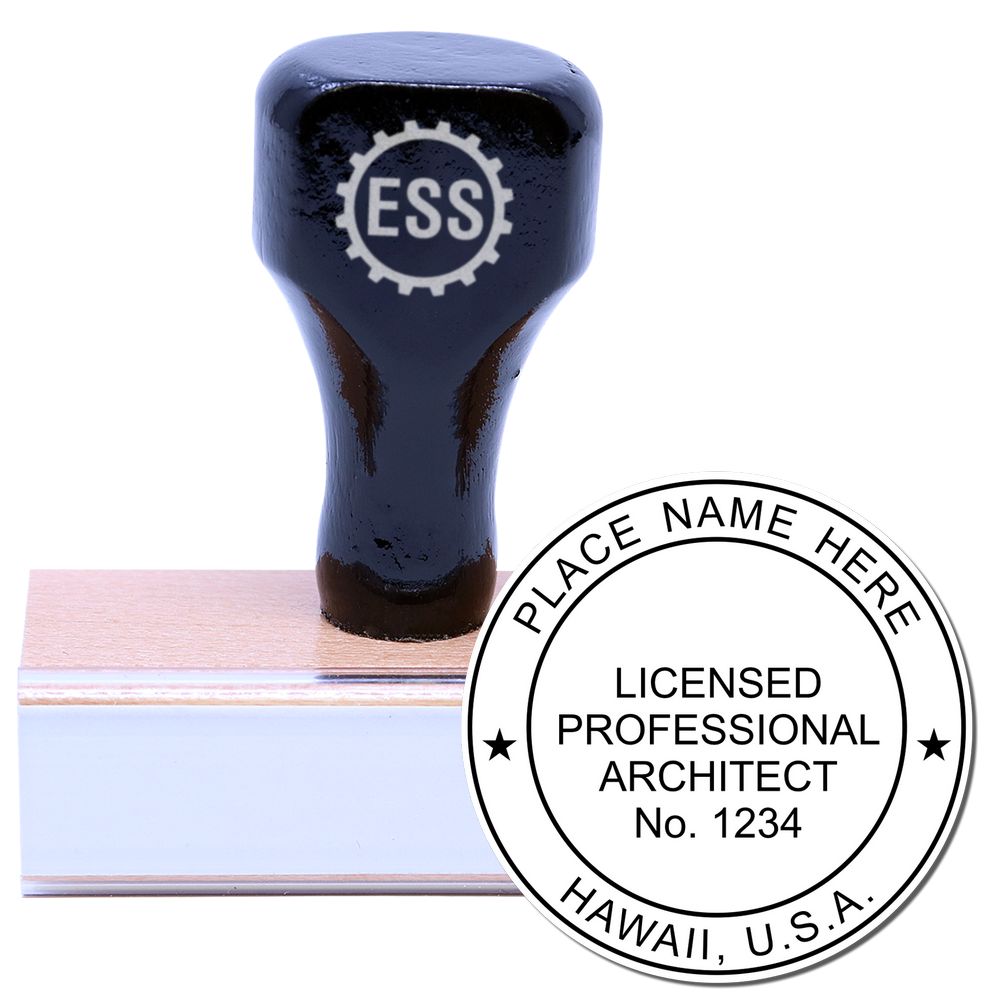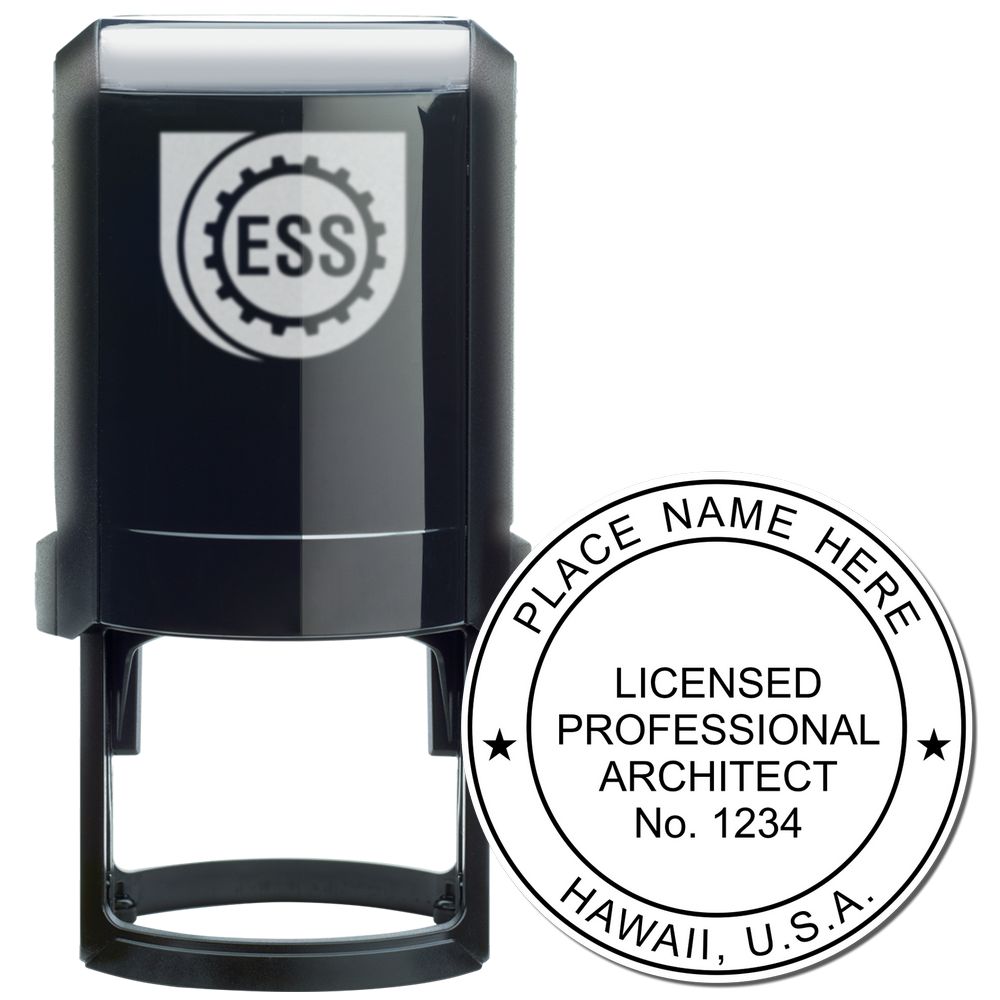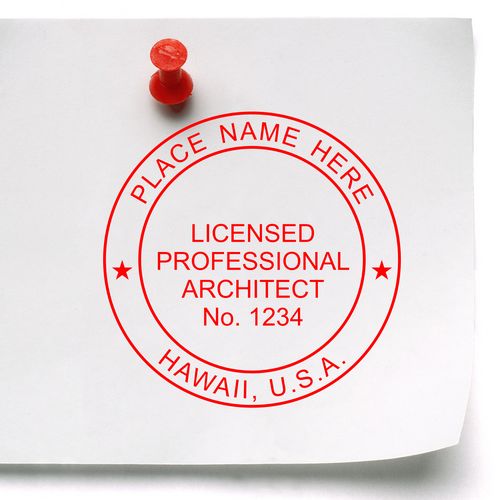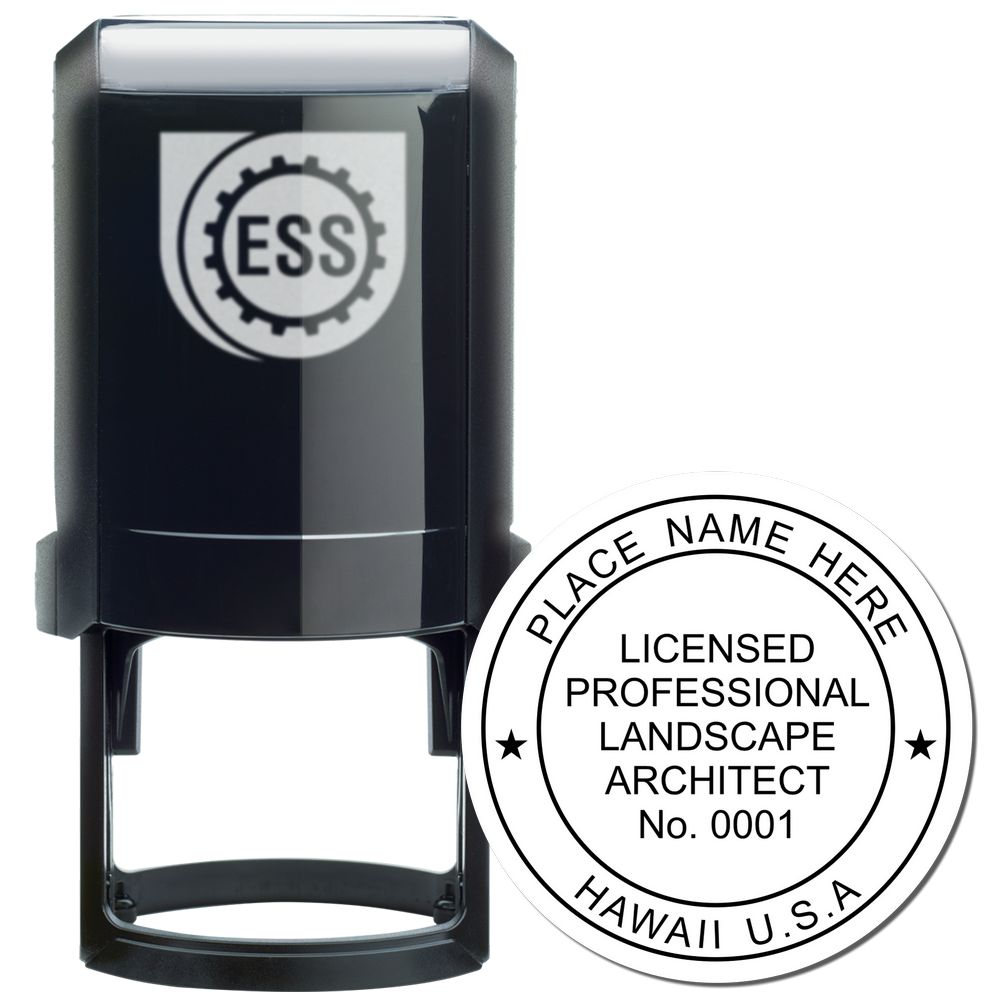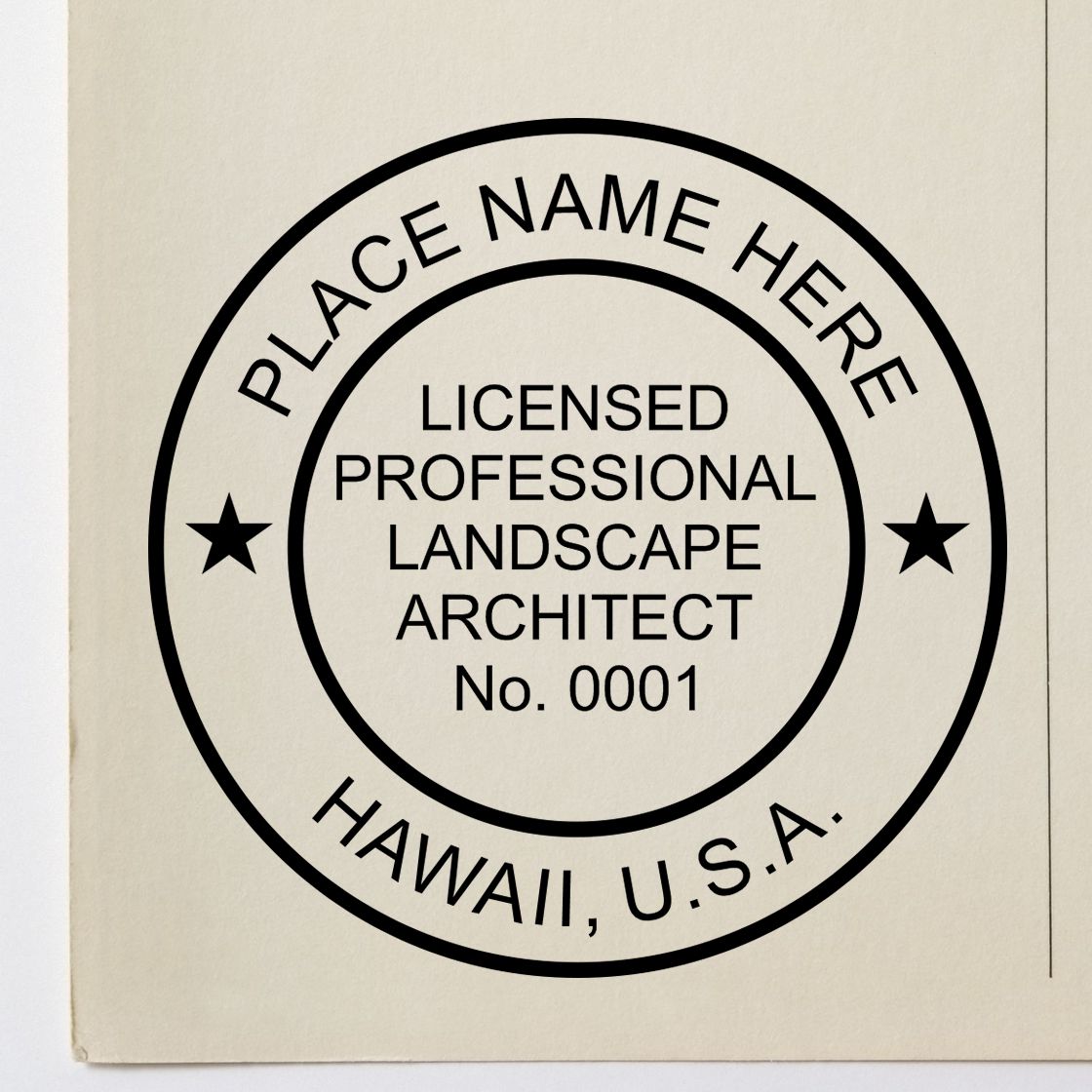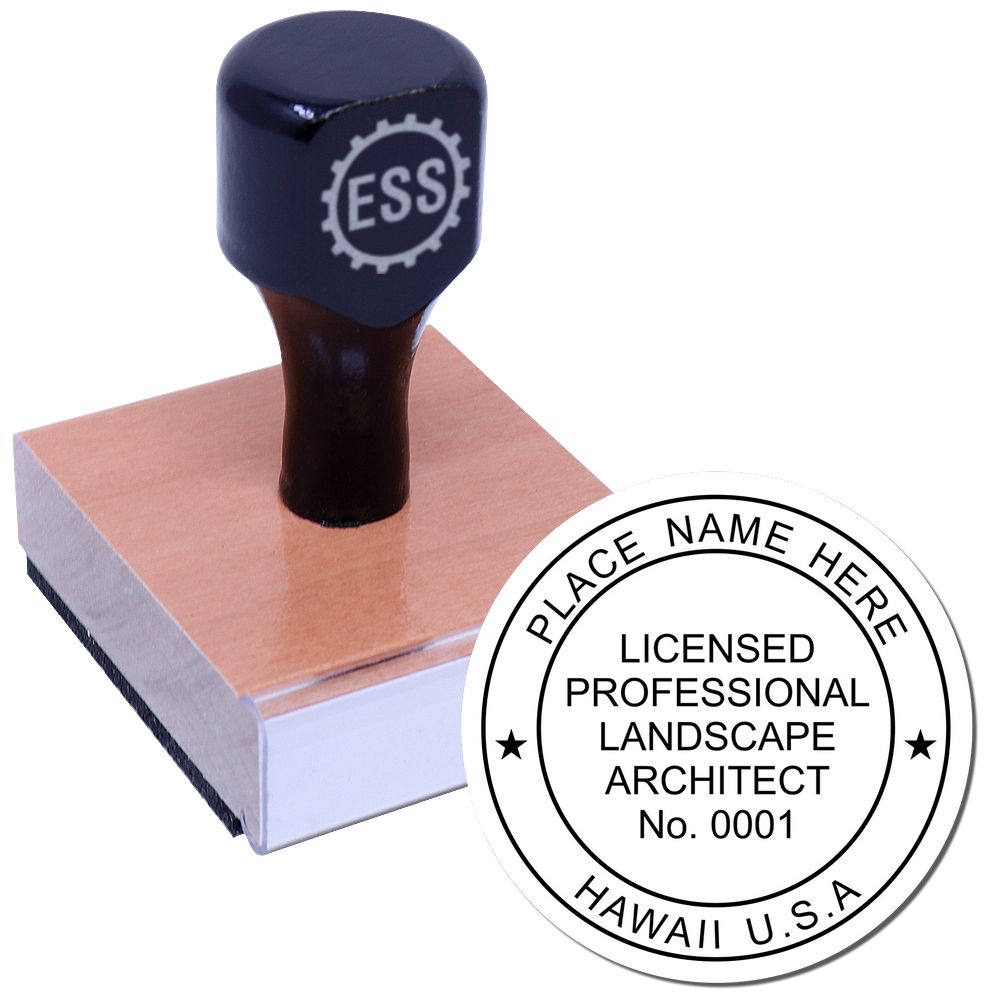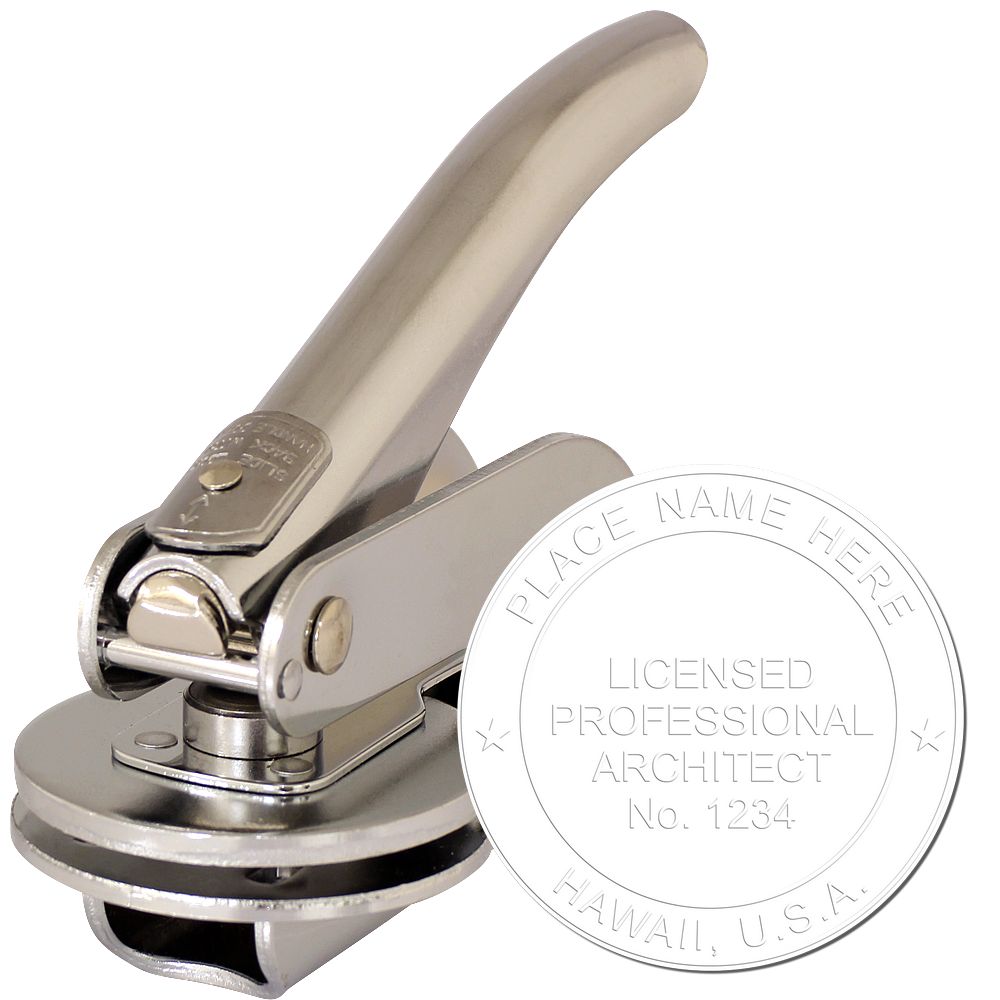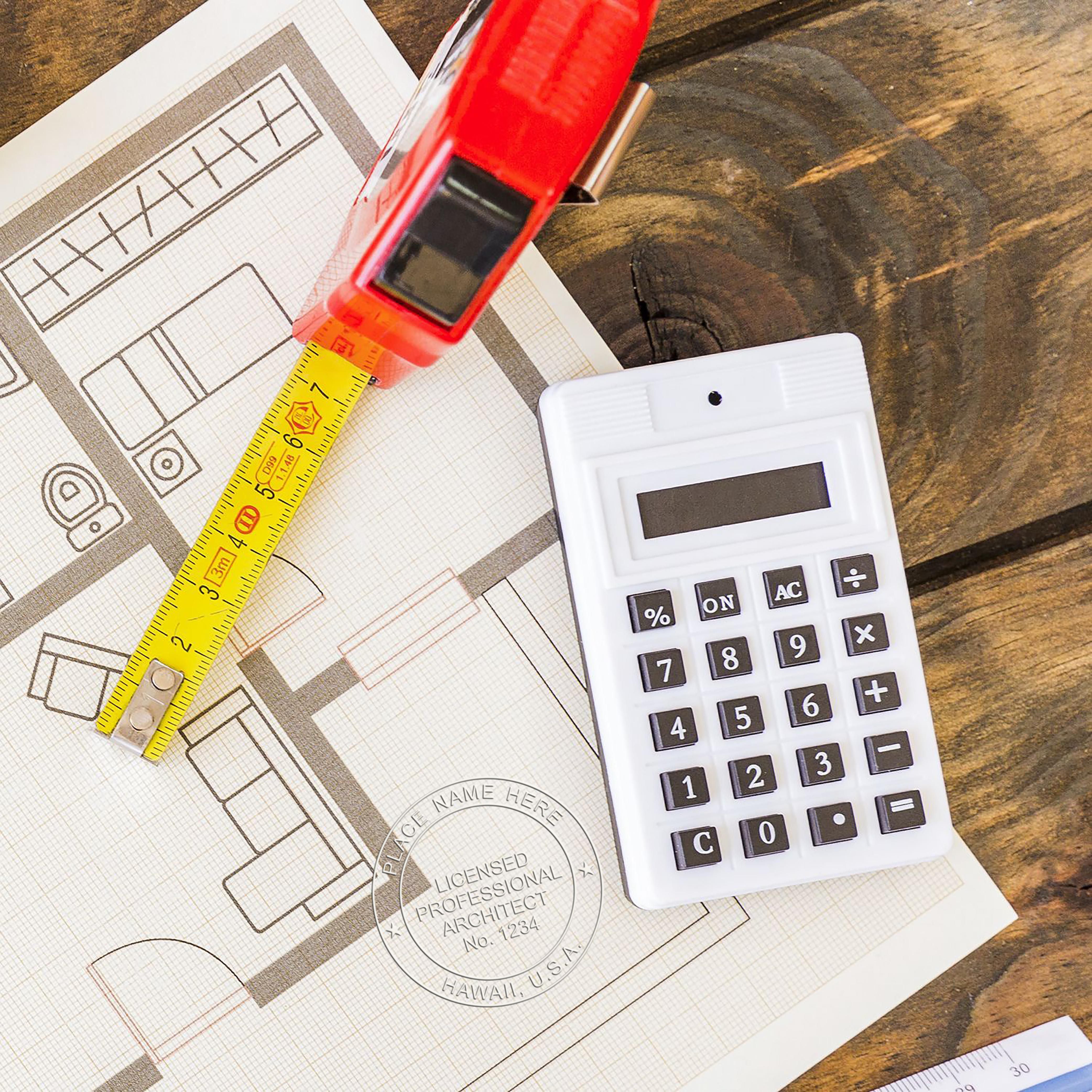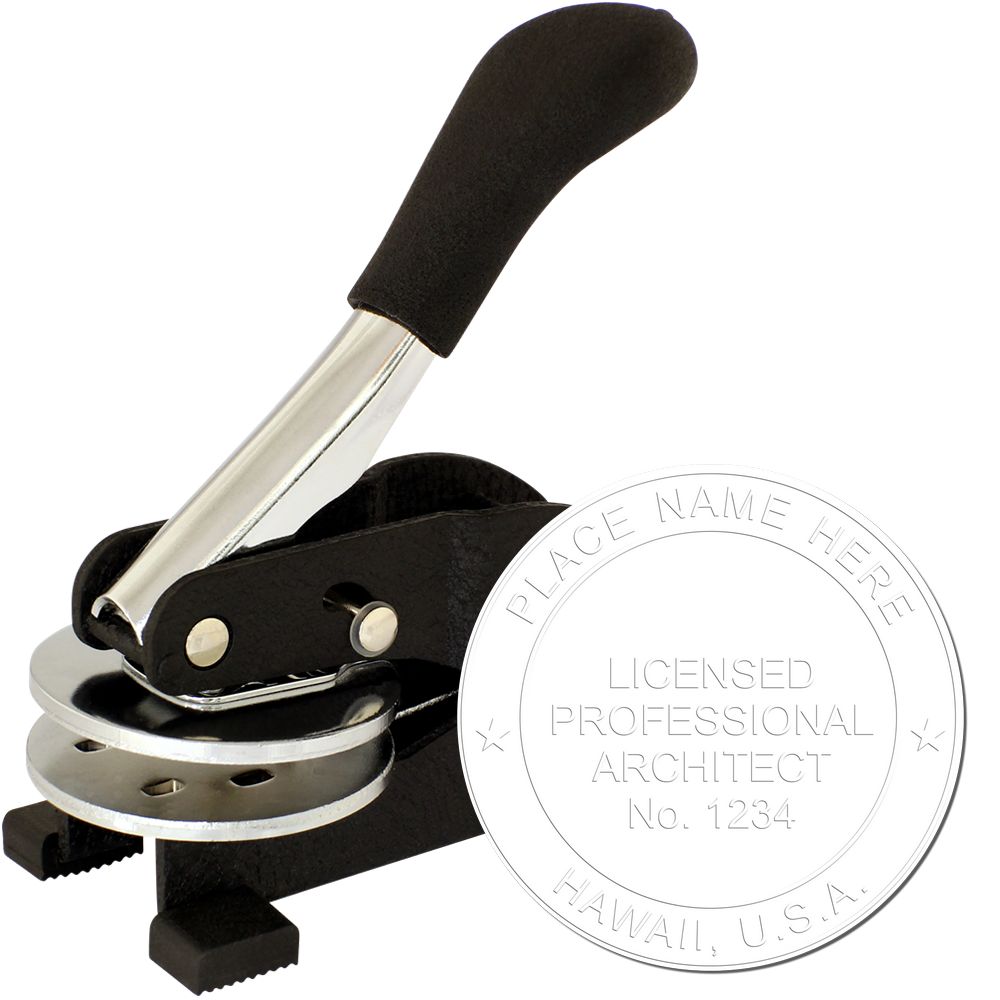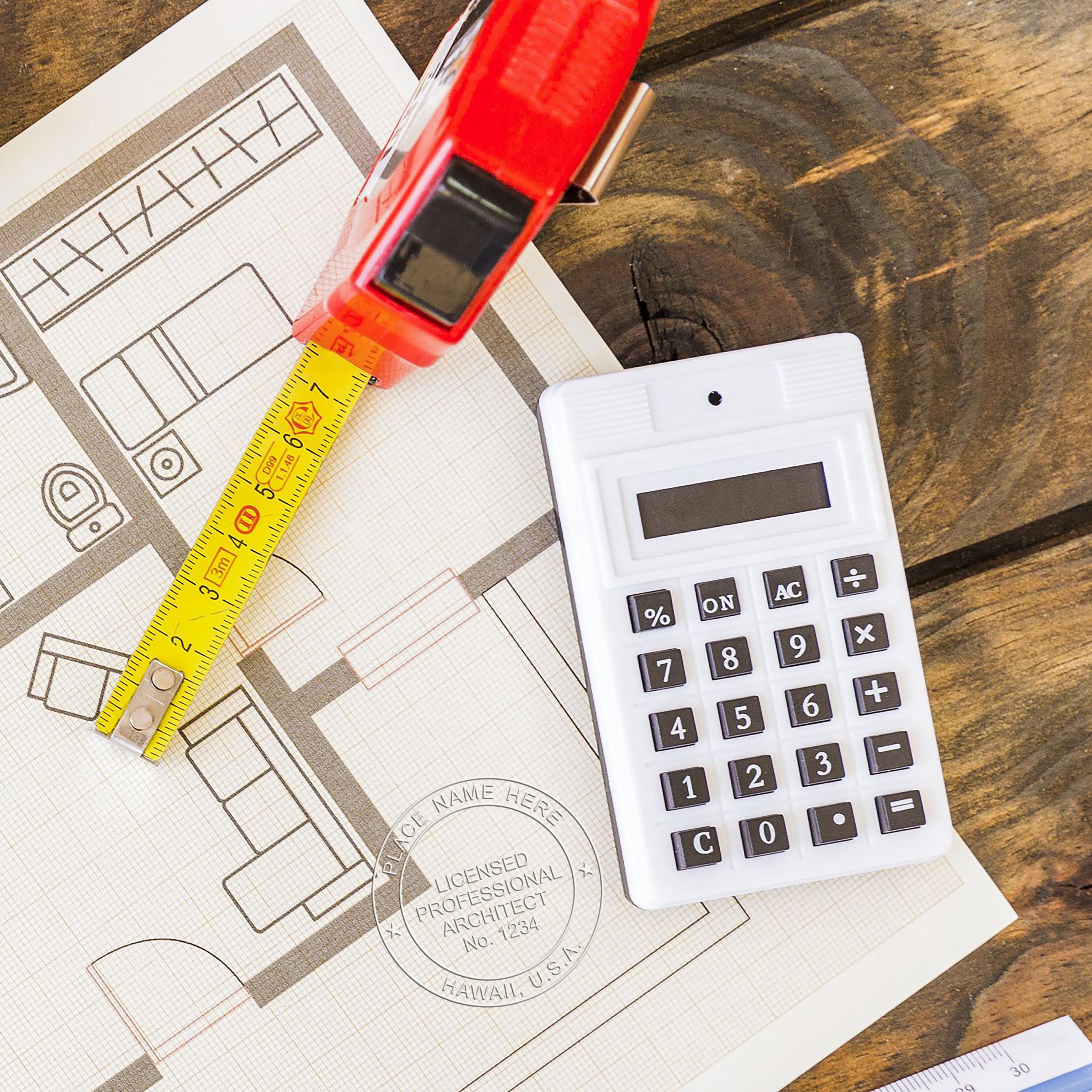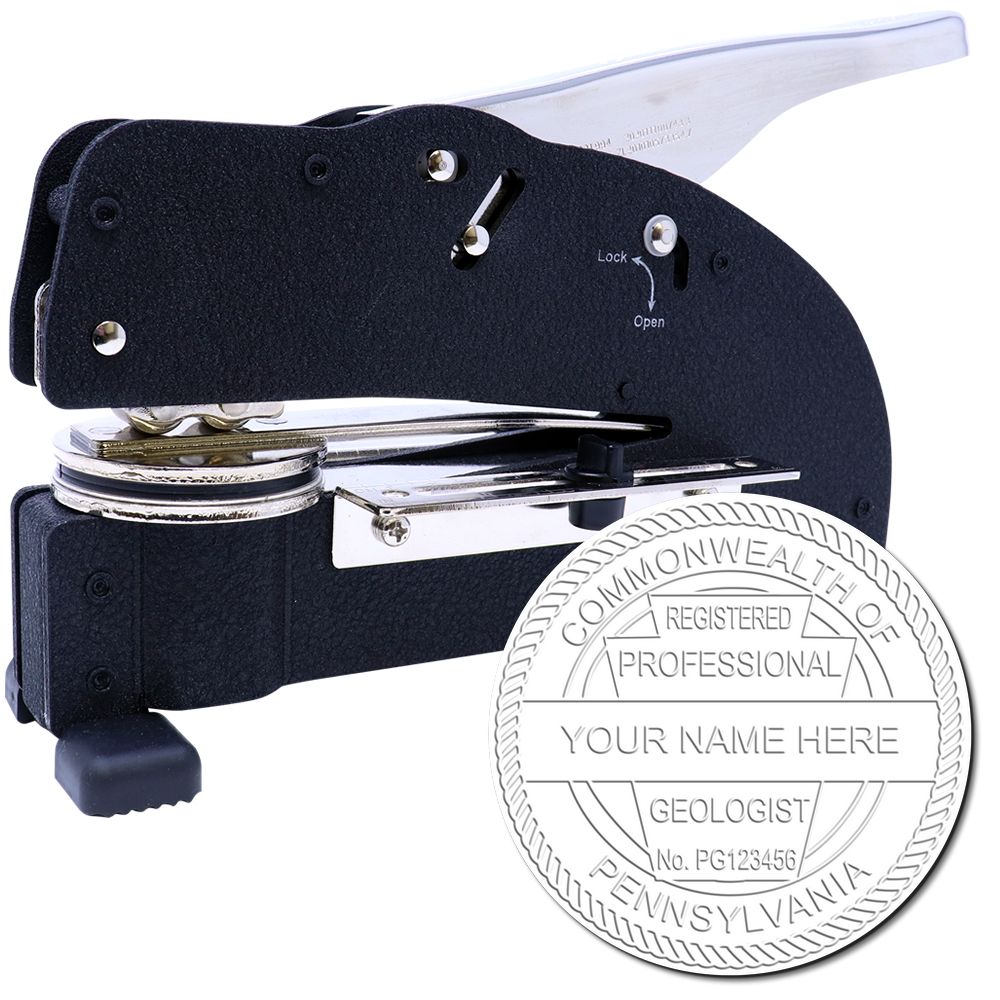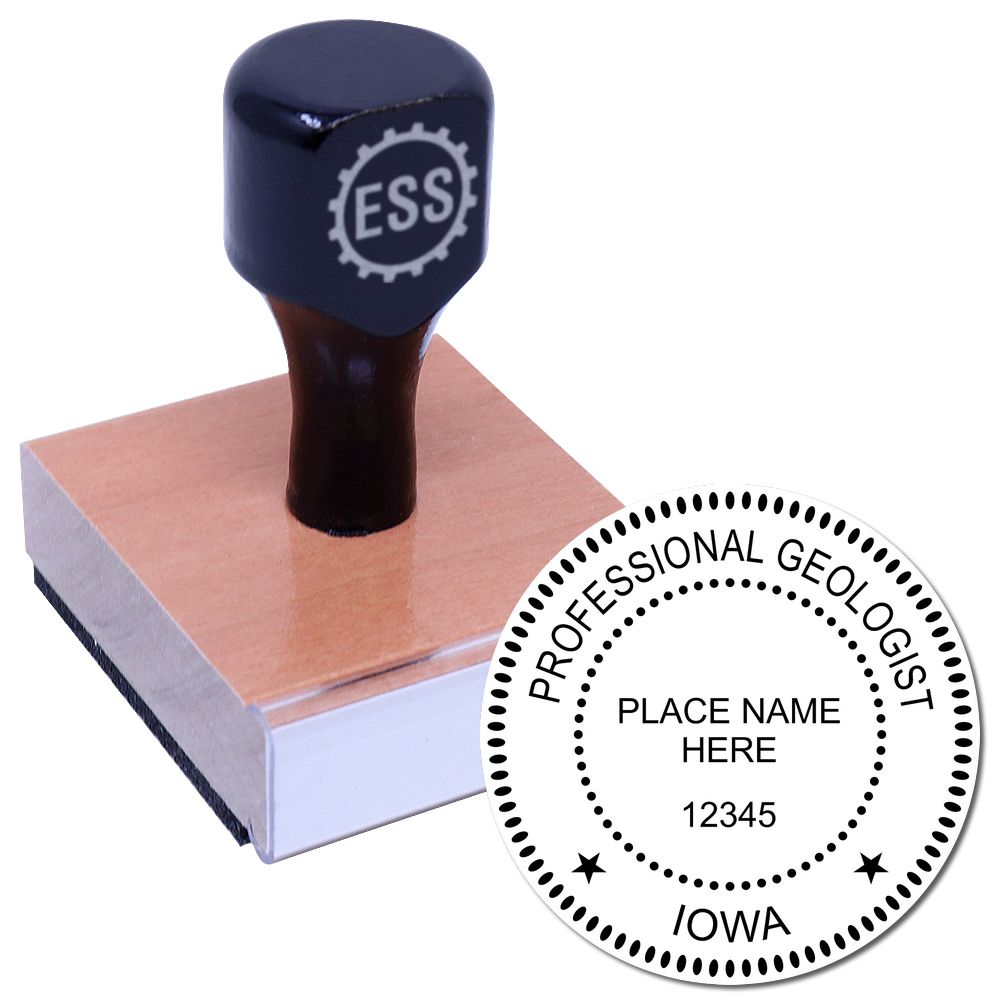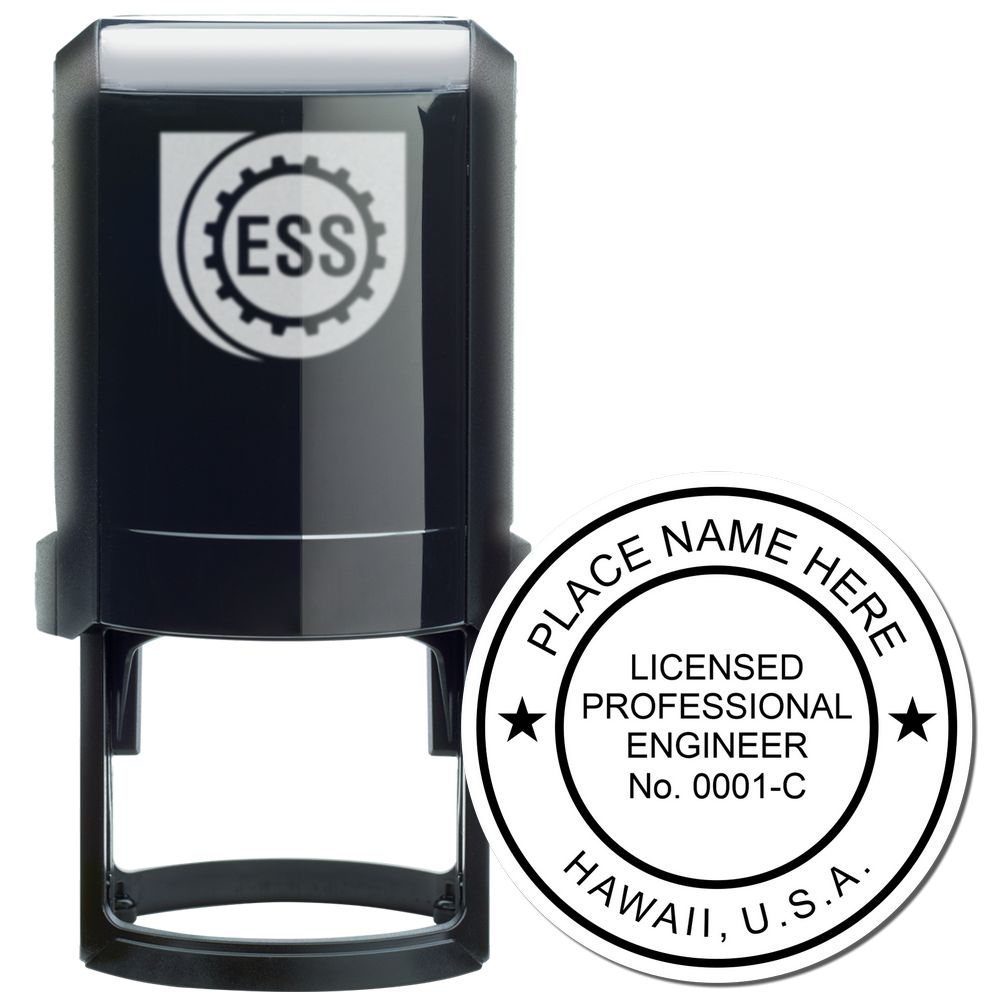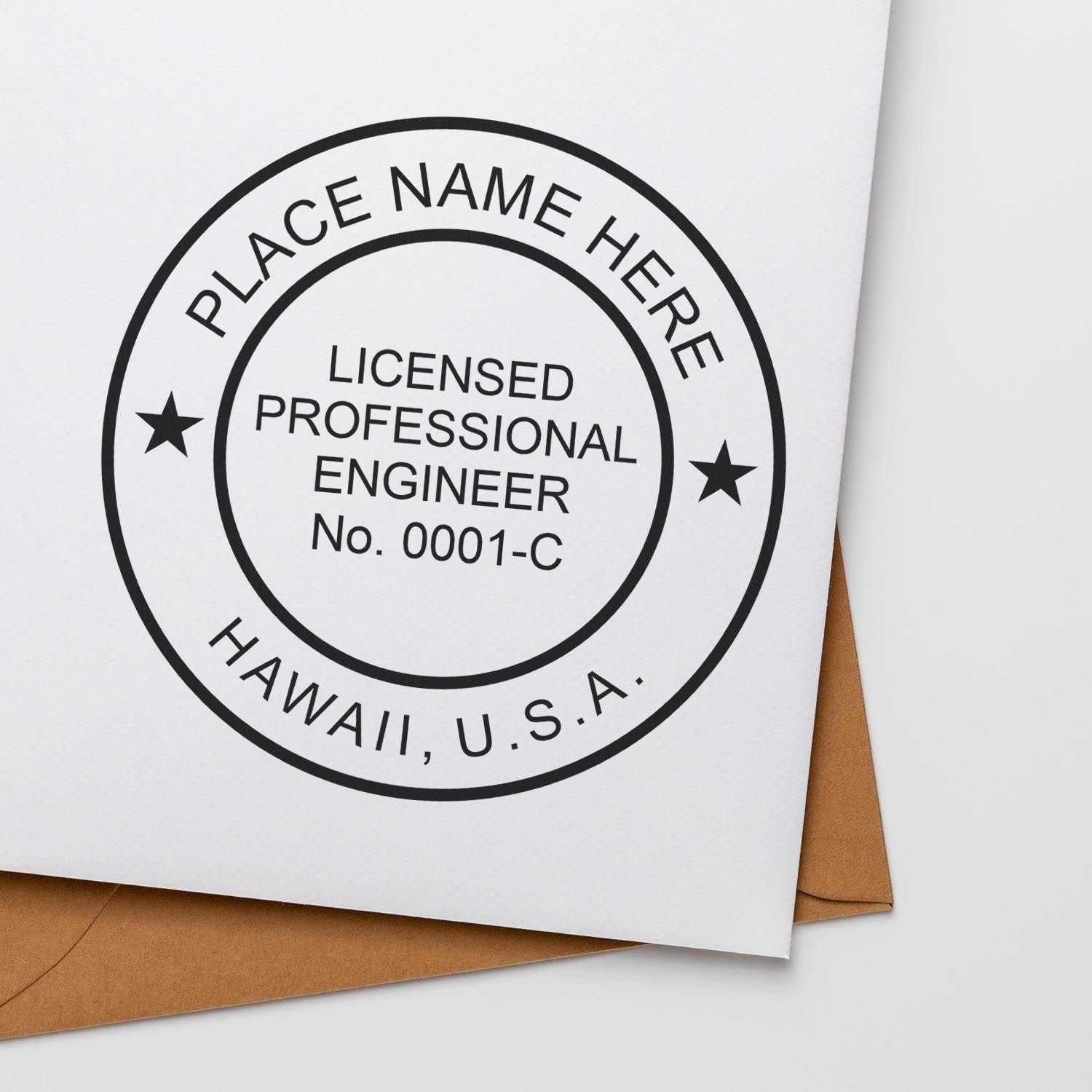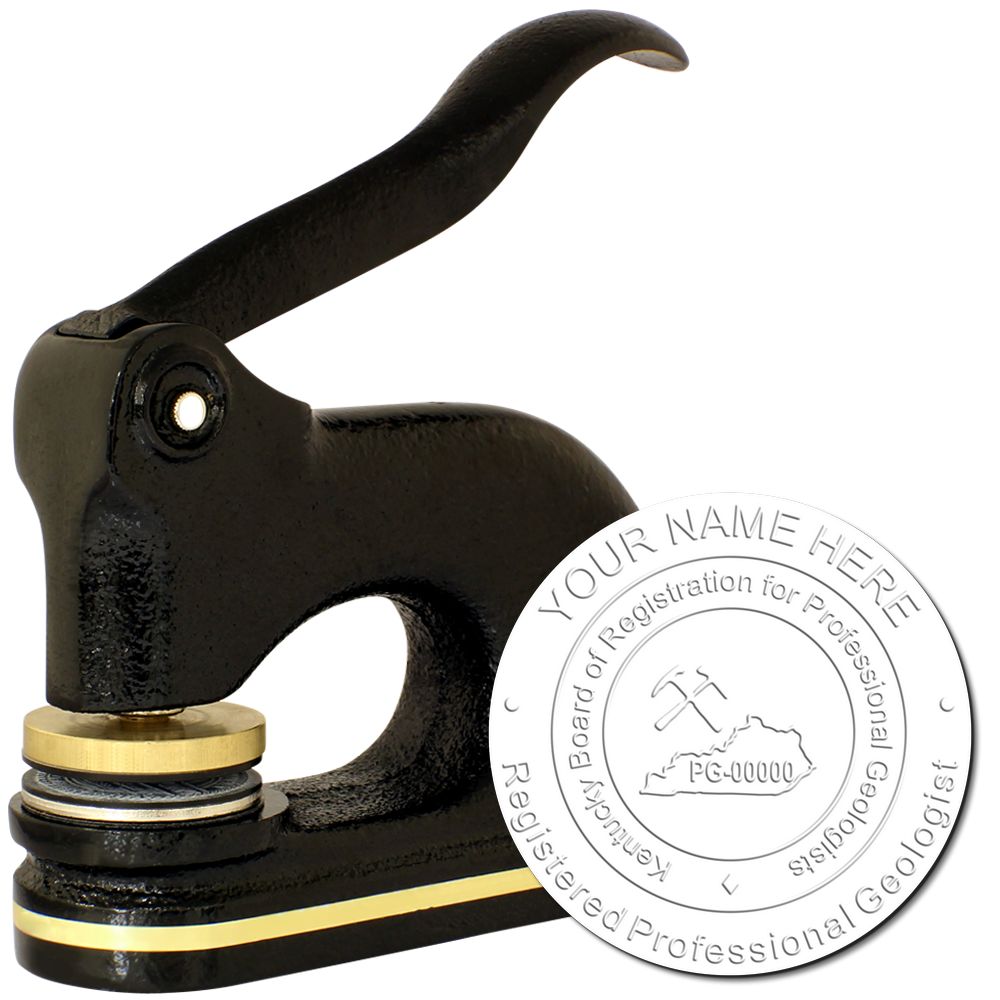Understanding Hawaii Architect Stamps
Architect stamps play a crucial role in the architectural industry, serving as a symbol of authenticity and professionalism. In Hawaii, architect stamps are subject to specific guidelines and requirements to ensure consistency and compliance with state regulations. Understanding these guidelines is essential for architects practicing in Hawaii.

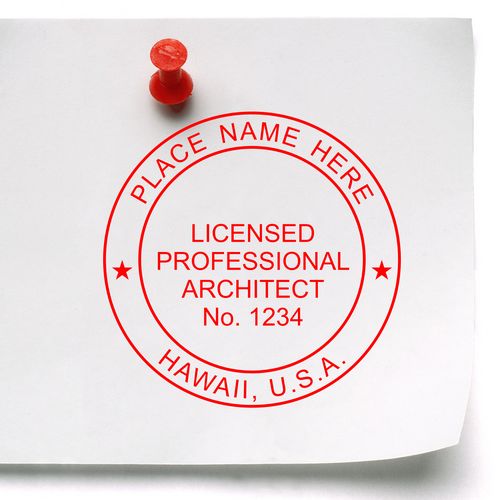
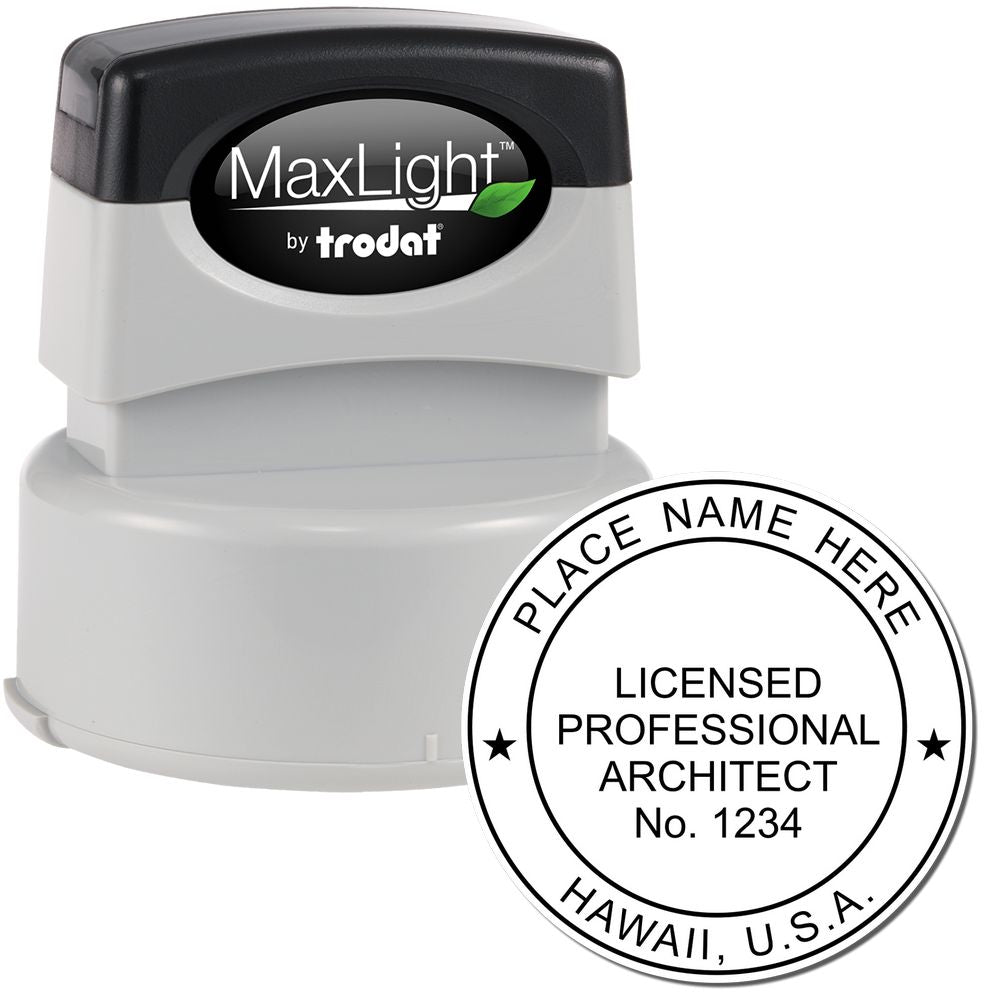
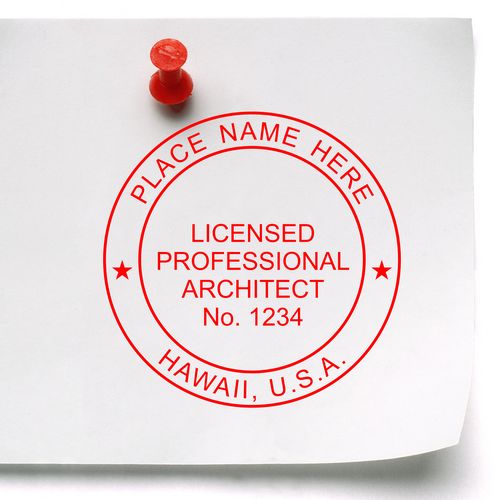
The Purpose of Architect Stamps
Architect stamps, also known as architect seals, are official markings used by licensed architects to certify their work. These stamps serve as a visual representation of the architect's professional credentials and signify that the documents or drawings have been prepared and approved by a licensed architect.
The primary purpose of architect stamps is to verify that the architectural plans, designs, or specifications comply with applicable laws, codes, and regulations. They provide assurance to clients, building officials, and the general public that the architectural work has been reviewed and approved by a qualified professional.
Overview of Hawaii Architect Stamp Guidelines
In Hawaii, architect stamps are governed by specific guidelines set forth by the Hawaii Architectural Licensing Board. These guidelines outline the requirements regarding the design, size, information, and usage of the stamp.
To comply with these guidelines, architects must ensure that their architect stamps meet the designated size and shape requirements. For detailed information on the size and shape of architect stamps in Hawaii, refer to our article on Hawaii architect stamp size.
Additionally, architect stamps in Hawaii must include certain information, such as the architect's name, license number, and the phrase "Registered Architect, State of Hawaii." The specific requirements for the information to be included on the architect stamp can be found in our article on Hawaii architect stamp requirements.
By adhering to these guidelines, architects can ensure that their architect stamps meet the necessary standards and are legally recognized in Hawaii.
Understanding the purpose and guidelines for architect stamps in Hawaii is vital for architects to maintain professional standards and comply with legal requirements. Architects should familiarize themselves with the Hawaii Architect Stamp Guidelines to ensure that their architect stamps meet the necessary criteria and are used appropriately. For further information, architects may refer to the Hawaii Architectural Licensing Board and consult professional organizations and associations related to the architectural industry.
Hawaii Architect Seal Design
When it comes to Hawaii architect stamps, it's important to understand the size and shape requirements as well as the required information that should be included on the seal. These guidelines ensure consistency and compliance with the regulations set forth by the Hawaii Architectural Licensing Board.
Size and Shape Requirements
The size and shape of the architect seal used in Hawaii must adhere to specific guidelines. The seal should have a circular shape with a diameter of no less than 1 5/8 inches and no more than 2 inches. This ensures that the seal is visible and legible when affixed to documents or drawings.
The circular shape of the seal represents professionalism and is a recognized symbol in the architectural field. It is essential to follow these size guidelines to maintain consistency and standardization across architectural documents.
Required Information on the Seal
The Hawaii architect seal should contain specific information that identifies the architect and their professional standing. The following details are required on the seal:
- The full name of the architect printed along the upper edge of the seal.
- The license number of the architect placed in the center of the seal.
- The words "Registered Architect" or "Architect" should be displayed along the lower edge of the seal.
Including this required information on the seal ensures that the architect's credentials are easily identifiable. It provides assurance to clients, contractors, and regulatory authorities that the architect is authorized to practice in the state of Hawaii.
To ensure compliance with the Hawaii architect stamp guidelines, architects are encouraged to obtain their stamps from reliable sources that adhere to the required specifications. For more information on the design, size, and requirements of Hawaii architect stamps, visit our article on hawaii architect stamp requirements.
By understanding and adhering to the size and shape requirements, as well as including the necessary information on the seal, architects in Hawaii can demonstrate their professionalism and compliance with the regulations set forth by the Hawaii Architectural Licensing Board.
Hawaii Architect Stamp Guidelines
To ensure compliance with Hawaii's regulations, architects must follow specific guidelines when it comes to the approval and registration process, authorized use of the stamp, and renewal and replacement procedures for their architect stamps.

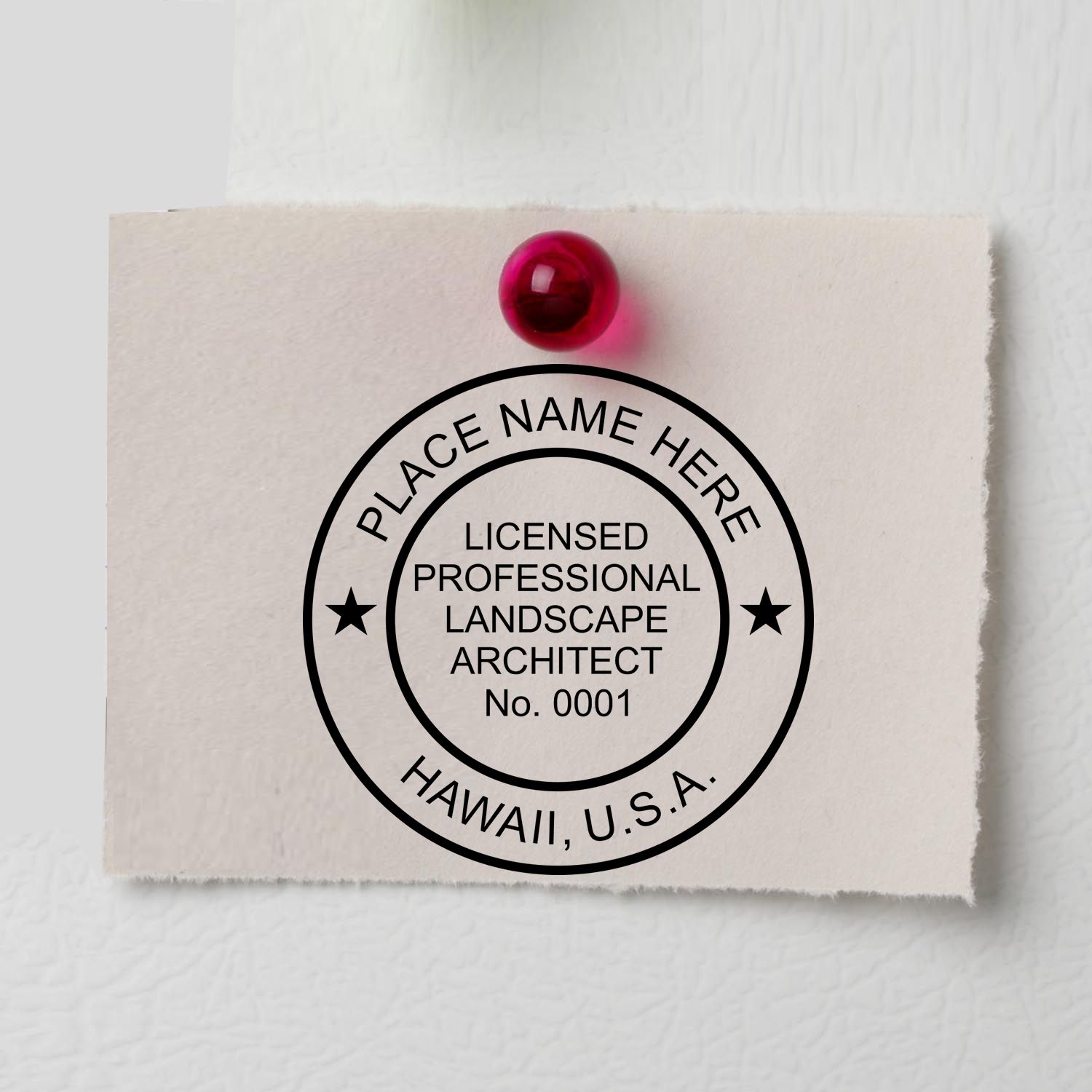
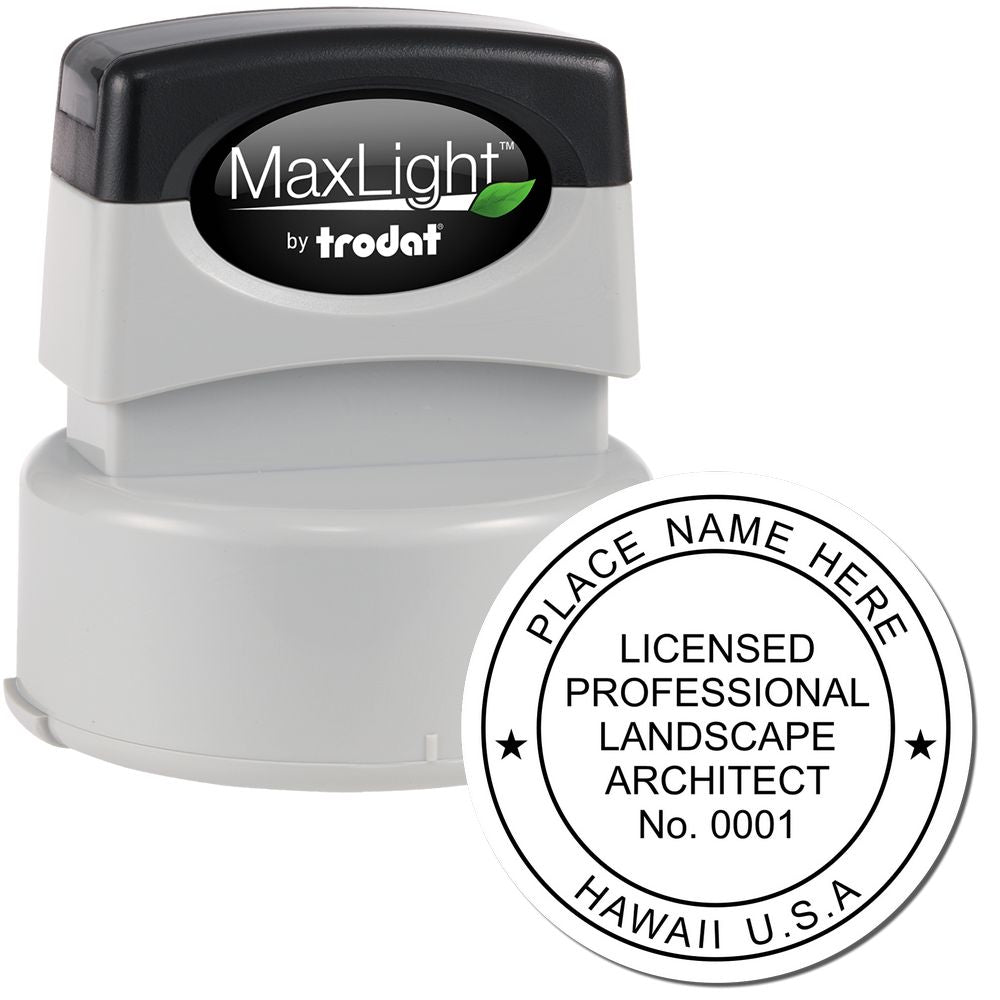
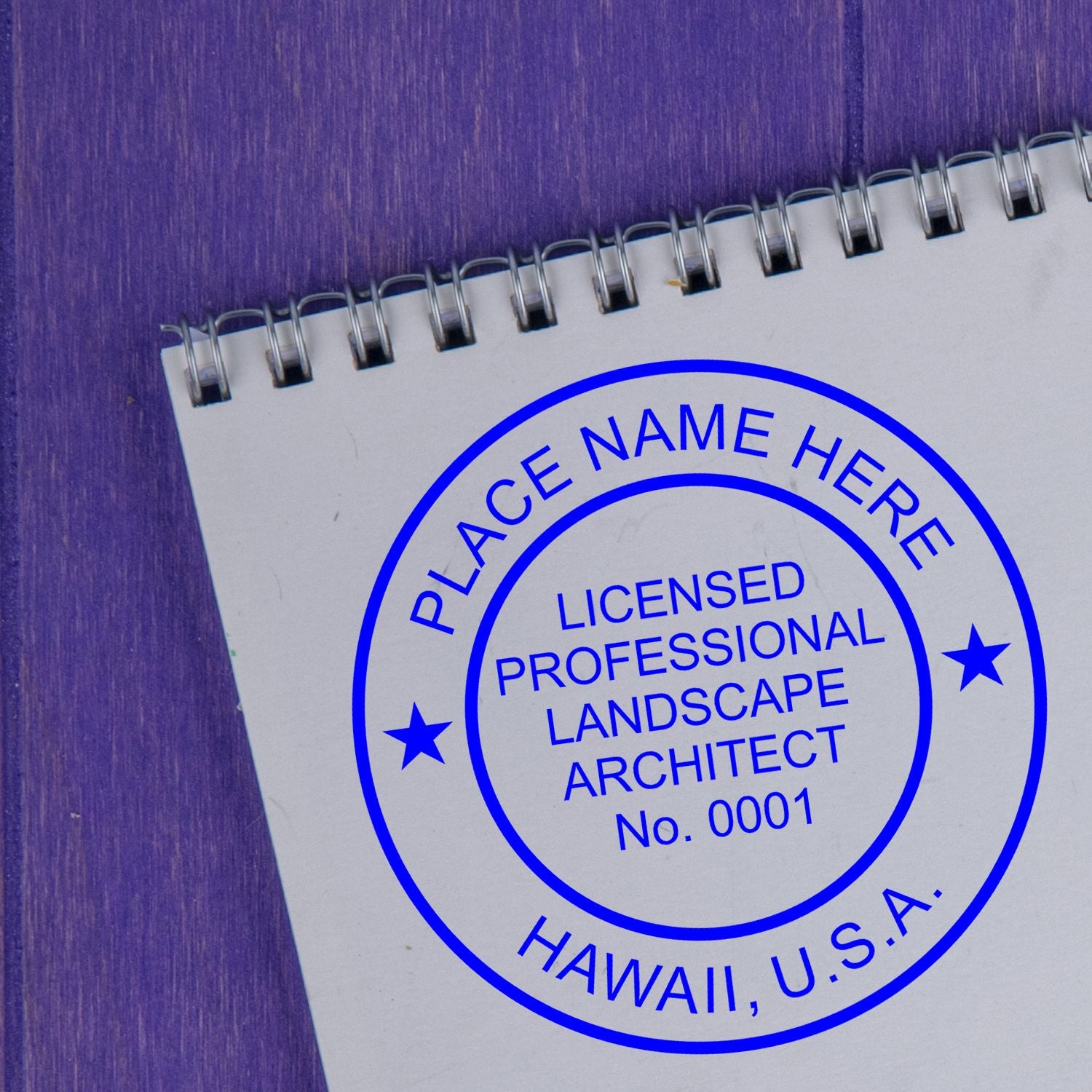
Approval and Registration Process
Before architects can use an architect stamp in Hawaii, they must go through an approval and registration process. This process typically involves submitting an application to the relevant authority, such as the Hawaii Architectural Licensing Board. The application will require architects to provide necessary information, including their professional credentials and proof of licensure.
Once the application is reviewed and approved, architects are granted the authority to use an architect stamp. It is essential to check the specific requirements and guidelines set by the Hawaii Architectural Licensing Board to ensure compliance with the registration process.
Authorized Use of the Stamp
After receiving approval and registration, architects are authorized to use their architect stamp on documents related to architectural projects. The stamp serves as a professional seal, indicating that the architect takes responsibility for the work and certifies its compliance with applicable laws and regulations.
Architects should familiarize themselves with the specific requirements for using the architect stamp in Hawaii. This includes understanding when and where the stamp should be applied, as well as any additional information that must accompany the stamp, such as the architect's name and license number. These guidelines help maintain the integrity and credibility of architectural work in the state.
For more information on the design and size requirements of the Hawaii architect stamp, refer to our article on Hawaii architect stamp design and Hawaii architect stamp size.
Renewal and Replacement Procedures
Architects in Hawaii must adhere to the renewal and replacement procedures for their architect stamps. The specific requirements for renewal and replacement may vary, so it is crucial to consult the regulations set forth by the Hawaii Architectural Licensing Board.
Renewal procedures typically involve submitting an application to renew the architect stamp within a specified timeframe. Architects may need to provide updated information, proof of continuing education or professional development, and pay any required fees. It is essential to stay aware of renewal deadlines to ensure uninterrupted use of the architect stamp.
In the event that an architect stamp is lost, damaged, or stolen, architects must follow the replacement procedures set by the Hawaii Architectural Licensing Board. This may involve submitting an application for a replacement stamp, providing any necessary documentation, and paying the applicable fees.
By understanding and following the approval and registration process, authorized use guidelines, and renewal and replacement procedures, architects can ensure compliance with Hawaii's architect stamp guidelines. These guidelines not only help maintain legal requirements but also contribute to upholding professional standards in the architectural industry. For more information on Hawaii architect stamps, visit our article on hawaii architect stamps.
Importance of Compliance
When it comes to Hawaii architect stamps, compliance with the guidelines is of utmost importance. Understanding and adhering to the legal requirements and professional standards associated with architect stamps is essential for architects practicing in Hawaii.
Legal Requirements and Consequences
Architect stamps in Hawaii are not just a formality; they carry legal significance. The use of an architect stamp signifies that the architect takes responsibility for the plans, drawings, and specifications associated with a project. Failure to comply with the Hawaii architect stamp guidelines can have serious consequences.
Architects who do not comply with the guidelines may face disciplinary action by the Hawaii Architectural Licensing Board. This can include fines, suspension, or even revocation of their license to practice architecture in the state. It is crucial for architects to familiarize themselves with the specific requirements outlined by the board to avoid any legal repercussions.
Maintaining Professional Standards
Compliance with the Hawaii architect stamp guidelines is not only a legal obligation but also a demonstration of an architect's commitment to maintaining professional standards. By adhering to these guidelines, architects ensure that their work meets the expectations of their clients, the industry, and the public.
Architect stamps serve as a mark of credibility and expertise, instilling confidence in clients and stakeholders. By using architect stamps correctly and in accordance with the guidelines, architects demonstrate their professionalism and dedication to upholding the highest standards of their profession.
It's worth noting that compliance with the guidelines not only applies to the initial approval and registration process but also extends to the ongoing use, renewal, and replacement procedures for architect stamps. Architects should stay informed about any updates or changes to the guidelines to ensure continued compliance.
Maintaining compliance with the Hawaii architect stamp guidelines not only protects architects legally but also contributes to the overall integrity and reputation of the architectural profession. By upholding these standards, architects can demonstrate their commitment to delivering high-quality work and maintaining the trust of their clients and the public.
For more information on Hawaii architect stamps and the specific requirements, you can visit the Hawaii Architectural Licensing Board. Additionally, professional organizations and associations can provide valuable resources and support for architects seeking guidance on compliance with the guidelines.
Additional Resources
In addition to understanding the Hawaii architect stamp guidelines, there are several valuable resources available to architects in Hawaii. These resources can provide further guidance, support, and information to ensure architects are well-informed and equipped to meet the necessary requirements.
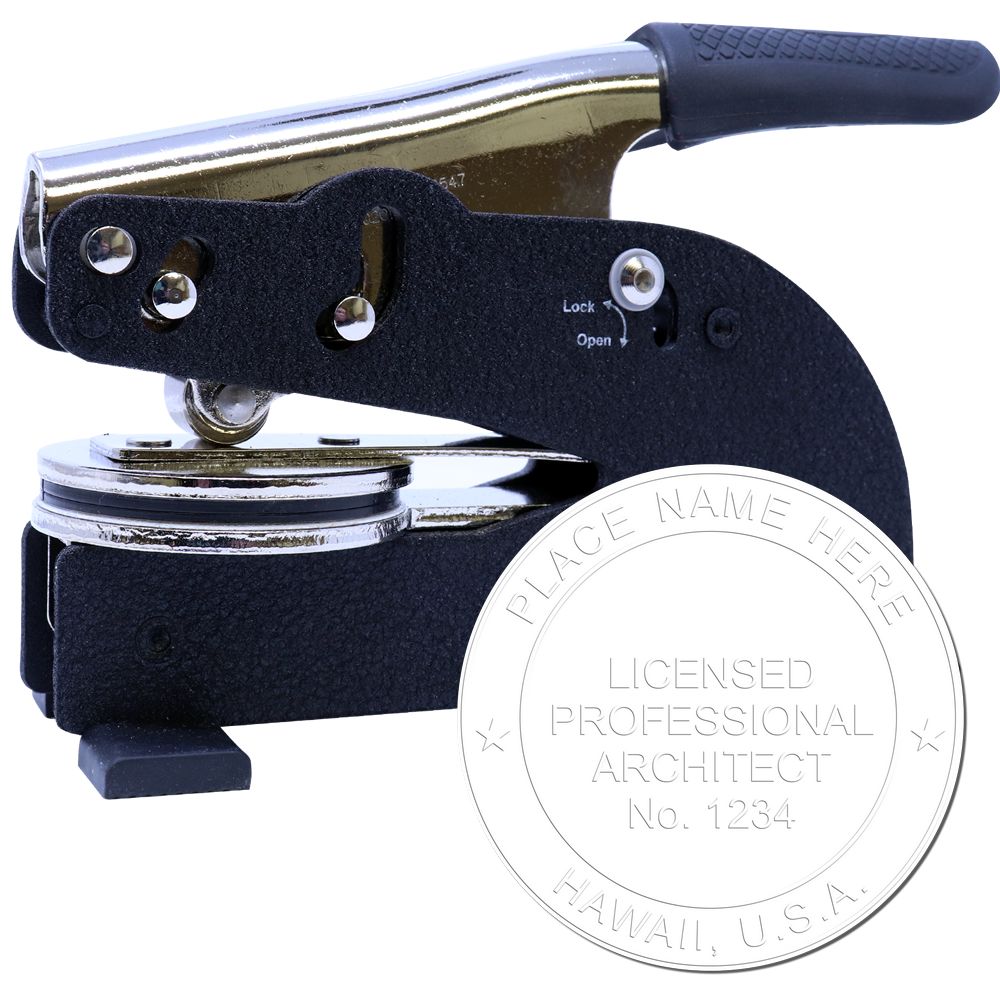

Hawaii Architectural Licensing Board
The Hawaii Architectural Licensing Board is a key resource for architects in Hawaii. This board is responsible for the regulation and oversight of architectural licensure in the state. They establish and enforce the rules and regulations governing architectural practice to protect the public and maintain professional standards.
Architects can visit the official website of the Hawaii Architectural Licensing Board to access important information such as licensing requirements, application forms, and contact details. The board's website also provides updates on any changes to the regulations and guidelines, ensuring architects stay up-to-date with the latest requirements.
For architects seeking specific details about Hawaii architect stamps, including where to purchase them, it is advisable to consult reputable providers such as Engineer Seals.
Professional Organizations and Associations
Architects in Hawaii can benefit from joining professional organizations and associations dedicated to advancing the architectural profession. These organizations provide networking opportunities, continuing education resources, and a platform for architects to exchange knowledge and ideas.
Some notable professional organizations and associations for architects in Hawaii include:
-
Hawaii Chapter of the American Institute of Architects (AIA): AIA is a professional organization that promotes excellence in architecture and advocates for the profession. Membership offers access to educational events, networking opportunities, and resources tailored to architects in Hawaii.
-
Hawaii Society of Professional Engineers (HSPE): Although primarily focused on engineering, HSPE welcomes architects as members and provides a platform for collaboration between these related professions. Architects can benefit from networking with engineers, attending educational seminars, and staying informed about industry developments.
By actively participating in these organizations and associations, architects can stay connected with peers, expand their knowledge base, and stay informed about the latest trends and developments in the architectural field.
While the Hawaii architect stamp guidelines are essential to ensure compliance and maintain professional standards, architects can enhance their understanding and professional growth by utilizing the resources provided by the Hawaii Architectural Licensing Board and engaging with professional organizations and associations. These resources serve as valuable references and support systems for architects in Hawaii as they navigate the intricacies of their profession.
About ESS
At Engineer Seal Stamps (ESS), we aren't just makers; we're dedicated craftsmen passionate about bringing precision to your fingertips. Specializing in the creation of custom rubber stamps, professional seals, and notary stamps, our expertise is underpinned by a steadfast commitment to stellar customer service. Every ESS product isn't just a tool, but a promise—backed by our state board guarantee, ensuring that each seal and stamp you receive from us is of impeccable standard. Our dedication extends beyond the product; we pride ourselves on being responsive, attentive, and always in tune with our customers' needs. Choose ESS, where excellence meets assurance, and every impression counts.

